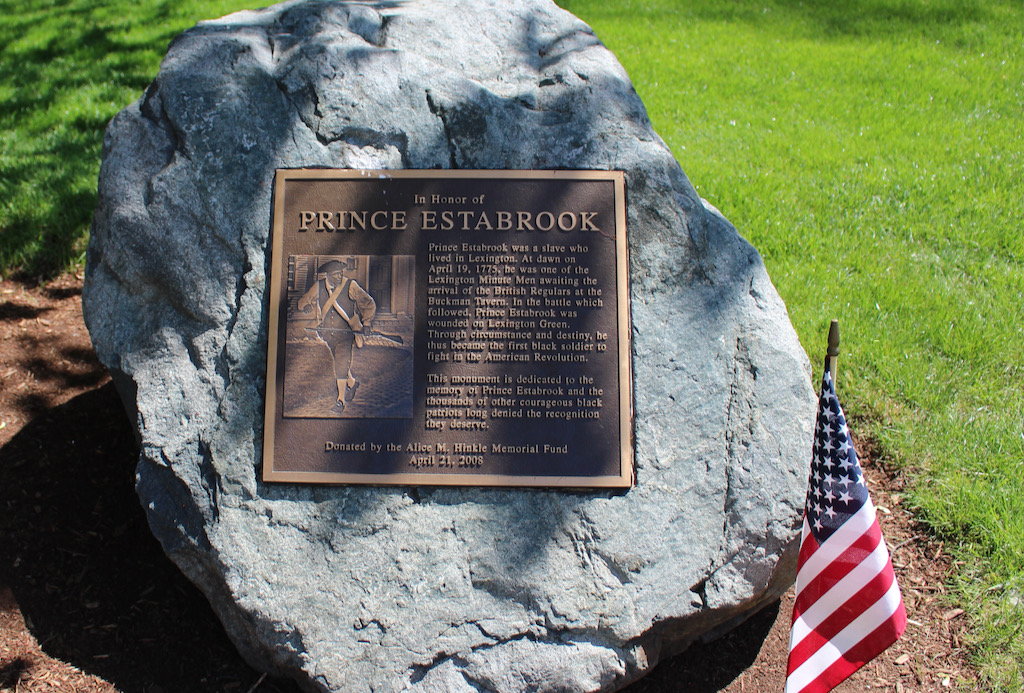More than five years ago, Freedom’s Way began to compile stories of the people, places and events in the region that make it unique. Dubbed Heritage Stories, this initiative built upon one of the thematic focuses of the organization—Revolutionary Ideas: Visionaries and Experimenters. The initiative continues to grow with each passing year, as stories evolve through additional research and more nuanced insights. This is true of the story of Lexington’s Prince Estabrook, an enslaved African American who fought in the American Revolution.
Likely born in Lexington in 1740 or 1741, Prince was enslaved by Benjamin Estabrook, a farmer and grist mill operator who lived east of the village center. Few surviving records remain of Prince’s early life and much of what is known is the result of research compiled by Alice M. Hinkle, whose 2001 book, Prince Estabrook: Slave and Soldier, brought to light the details of his remarkable story.
Despite the Massachusetts law barring “Indians and Negroes” from training with the militia, as an abled bodied man Prince was required to respond in case of an emergency and on the evening of April 18, 1775, joined members of the Lexington militia, under the command of Captain John Parker as the British advanced upon Lexington. When the British arrived the following morning, Prince was among the patriots waiting on Lexington Green. Struck by a musket ball in his left shoulder during the skirmish, he is one of, if not the first, Black soldier to both fight and be injured in the American Revolution.
Following his recovery, Prince continued his military service. He served throughout the remainder of the Revolutionary War in the Continental Army including as a guard at their headquarters in Cambridge during the Battle of Bunker Hill. One of the thousands of African Americans who fought on the American side during the Revolutionary War, by the time Prince’s service in the army concluded the Massachusetts Supreme Judicial Court had abolished slavery. He was now a free man.
Prince is listed in the 1790 tax records as residing in the Estabrook household as a freeman and was perhaps being paid for his service. It is unclear if he ever married or had children. What is known is that Prince moved to Ashby, Massachusetts with the family of Benjamin Estabrook’s son, Nathan. Here he died in 1830 and was buried in the paupers’ section of the town’s Old Burial Ground.
In 1930, one hundred years after his death, Massachusetts celebrated its Tercentenary and during that year, the Brigadier General James Reed Chapter of the Sons of the American Revolution petitioned the U.S. Department of War to install a headstone in the burying ground to honor Estabrook. An article at that time, in the Fitchburg Evening Gazette, reported that Prince was a brave defender of American liberty and the headstone, like those that mark the graves of other heroes of the American War, befitting his service.
A second memorial to Prince was dedicated in Lexington in 2008. Sited across from the town green where he fought in 1775, it was the culmination of his biographer Alice Hinkle’s quest to publicly acknowledge his role as one of the first black men to fight in the American Revolution in the community in which he served.

